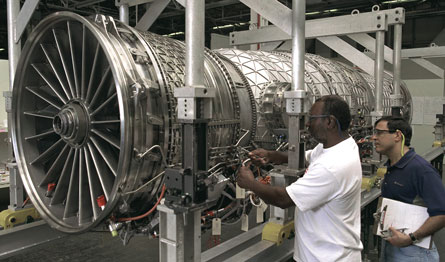The US military's top executive for the F-35 Joint Strike Fighter has revealed new concerns about technical and cost failures facing the programme's primary engine supplier.
Brig Gen David Heinz's comments come one month after Pratt & Whitney acknowledged that it is struggling to meet cost-reduction goals for the F135 engine. Speaking after the roll-out ceremony for the US Navy's first F-35C in Fort Worth, Texas on 28 July, Heinz said P&W's production system for the F135 is delivering key components below required tolerances.
The problems include too many individual blades that fail to meet specifications, as well as combined "stack-ups" of blades that fail early, he says, adding: "I'm not satisfied with the rates that I'm getting."
 |
|---|
© Pratt & Whitney |
The F135 has experienced problems with blade reliability
In June, Heinz said the F-35 programme has not realised expected benefits from its dual sourcing strategy because P&W has not felt compelled to compete on equal terms with the rival General Electric/Rolls-Royce F136 programme.
P&W officials have proposed a plan for lowering the cost of the F135 through investing up-front in new tools and techniques that could accelerate learning curves.
"When any new product is introduced, there are normal opportunities for process improvement with start-up," it says. "There is room for us to improve our production yield, and we have a plan in place to do that."
The company also cites its experience with the F119 engine powering the US Air Force's Lockheed F-22, where cost declined by 30% after the 250th unit was delivered.
Heinz has walked a fine line in the debate about supporting duelling engine programmes for the F-35. Although supportive of the Department of Defense's decision to reject continued funding for the F136, he has also pointed out the potential benefits of retaining a competitive sourcing strategy.
Lockheed remains "agnostic" about the engine battle, says Dan Crowley, its executive vice-president and general manager for the F-35, but the company does not want the issue to put funding for the primary engine at risk.
Source: Flight International
















